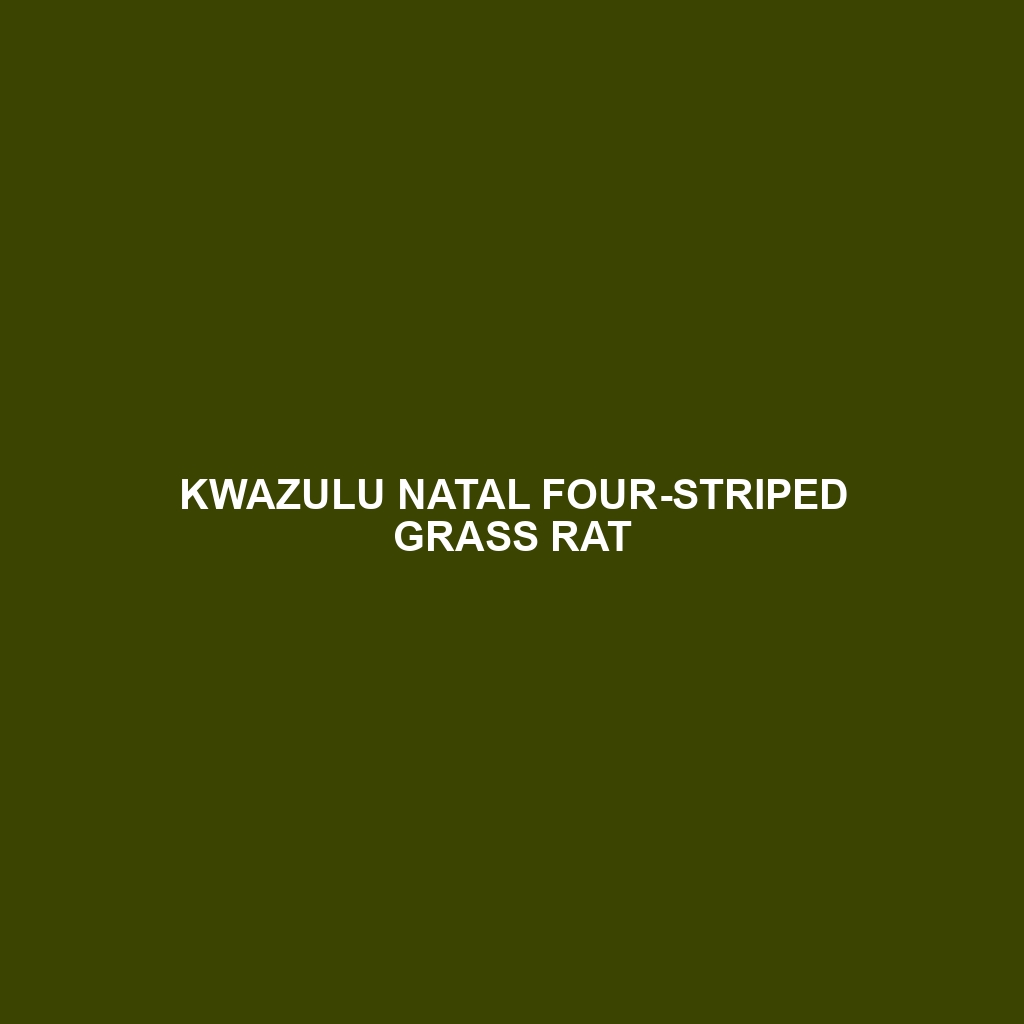Common Name: KwaZulu Natal Four-striped Grass Rat
Scientific Name:
Habitat:
The KwaZulu Natal Four-striped Grass Rat is primarily found in the eastern regions of South Africa, especially in the KwaZulu-Natal province. This species thrives in grassy wetlands, savannas, and along riverbanks, where it prefers open grassy fields with dense vegetation for shelter. Their habitat is characterized by a subtropical climate, which provides the ideal environment for their survival.
Physical Characteristics:
The KwaZulu Natal Four-striped Grass Rat typically measures around 20 to 30 cm in length, including a long tail. Its fur is a rich brown color with distinctive light-colored stripes running along its back, which aids in camouflage among the grass. This rodent has a rounded body, long whiskers, and large ears, making it well-adapted to its habitat. Its unique coloration and physical features make it distinguishable from other grass rat species.
Behavior:
This species is primarily nocturnal, exhibiting peak activity during the night when it forages for food. The KwaZulu Natal Four-striped Grass Rat is known for its agility and skill in climbing and burrowing. It exhibits social behavior, often found in small family groups, and communicates through a series of chirps and squeaks. Notably, their ability to navigate and escape predators contributes to their survival in the wild.
Diet:
The KwaZulu Natal Four-striped Grass Rat is herbivorous, primarily feeding on grasses, seeds, and leaves. They display foraging behavior, often nibbling on young shoots and roots. This grass rat is also known to store food for later consumption, enabling it to survive periods of scarcity. Understanding their diet is crucial for maintaining their population in the wild.
Reproduction:
Reproduction among KwaZulu Natal Four-striped Grass Rats typically occurs during the warmer months, with a breeding season that often spans from early spring to late summer. The female gives birth to a litter of 2 to 6 pups after a gestation period of about 3 weeks. The young are born blind and helpless, relying entirely on their mother until they are weaned at around 3 weeks of age. The nurturing behavior displayed by the mothers is critical for the survival of the offspring.
Conservation Status:
The KwaZulu Natal Four-striped Grass Rat is currently classified as vulnerable due to habitat loss and fragmentation. Conservation efforts are essential to protect their natural habitat and maintain stable populations in the wild. Understanding the threats faced by this species is vital for effective conservation strategies.
Interesting Facts:
This species is particularly intriguing due to its unique adaptation to wetland environments. KwaZulu Natal Four-striped Grass Rats have been known to construct elaborate burrow systems that can extend several feet underground. These burrows not only provide protection from predators but also serve as a vital resource for storing food.
Role in Ecosystem:
The KwaZulu Natal Four-striped Grass Rat plays a significant role in its ecosystem by acting as a prey species for various predators, including birds of prey and small mammals. Its foraging activities contribute to seed dispersal, promoting plant diversity within its habitat. As a herbivore, it also helps maintain the ecological balance by preventing overgrowth of certain plant species.
